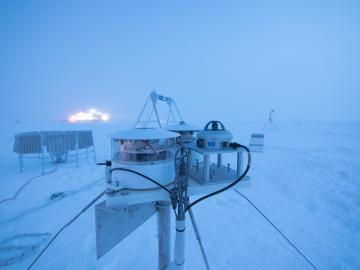
Filter News
Area of Research
- Advanced Manufacturing (6)
- Biology and Environment (32)
- Biology and Soft Matter (1)
- Computational Engineering (1)
- Energy Science (40)
- Fusion and Fission (1)
- Fusion Energy (1)
- Isotopes (20)
- Materials (48)
- Materials for Computing (9)
- Mathematics (1)
- National Security (13)
- Neutron Science (11)
- Nuclear Science and Technology (5)
- Quantum information Science (1)
- Supercomputing (22)
News Type
News Topics
- (-) Cybersecurity (17)
- (-) Isotopes (40)
- (-) Materials (89)
- (-) Polymers (21)
- (-) Space Exploration (23)
- 3-D Printing/Advanced Manufacturing (93)
- Advanced Reactors (26)
- Artificial Intelligence (94)
- Big Data (67)
- Bioenergy (86)
- Biology (102)
- Biomedical (55)
- Biotechnology (29)
- Buildings (55)
- Chemical Sciences (50)
- Clean Water (31)
- Composites (22)
- Computer Science (159)
- Coronavirus (31)
- Critical Materials (18)
- Education (2)
- Emergency (4)
- Energy Storage (69)
- Environment (172)
- Exascale Computing (52)
- Fossil Energy (7)
- Frontier (46)
- Fusion (49)
- Grid (56)
- High-Performance Computing (94)
- Hydropower (12)
- Irradiation (2)
- ITER (7)
- Machine Learning (54)
- Materials Science (98)
- Mathematics (12)
- Mercury (10)
- Microelectronics (3)
- Microscopy (38)
- Molten Salt (7)
- Nanotechnology (33)
- National Security (66)
- Neutron Science (112)
- Nuclear Energy (90)
- Partnerships (37)
- Physics (43)
- Quantum Computing (39)
- Quantum Science (60)
- Security (19)
- Simulation (53)
- Software (1)
- Statistics (3)
- Summit (48)
- Transportation (71)
Media Contacts

Researchers at Oak Ridge National Laboratory were part of an international team that collected a treasure trove of data measuring precipitation, air particles, cloud patterns and the exchange of energy between the atmosphere and the sea ice.

Radioactive isotopes power some of NASA’s best-known spacecraft. But predicting how radiation emitted from these isotopes might affect nearby materials is tricky

Oak Ridge National Laboratory scientists have discovered a cost-effective way to significantly improve the mechanical performance of common polymer nanocomposite materials.

Oak Ridge National Laboratory scientists evaluating northern peatland responses to environmental change recorded extraordinary fine-root growth with increasing temperatures, indicating that this previously hidden belowground mechanism may play an important role in how carbon-rich peatlands respond to warming.

From materials science and earth system modeling to quantum information science and cybersecurity, experts in many fields run simulations and conduct experiments to collect the abundance of data necessary for scientific progress.

Researchers at Oak Ridge National Laboratory developed a method that uses machine learning to predict seasonal fire risk in Africa, where half of the world’s wildfire-related carbon emissions originate.

Oak Ridge National Laboratory researchers have discovered a better way to separate actinium-227, a rare isotope essential for an FDA-approved cancer treatment.
An international team of scientists found that rules governing plant growth hold true even at the edges of the world in the Arctic tundra.

Oak Ridge National Laboratory researchers have developed a thin film, highly conductive solid-state electrolyte made of a polymer and ceramic-based composite for lithium metal batteries.

Biological membranes, such as the “walls” of most types of living cells, primarily consist of a double layer of lipids, or “lipid bilayer,” that forms the structure, and a variety of embedded and attached proteins with highly specialized functions, including proteins that rapidly and selectively transport ions and molecules in and out of the cell.


